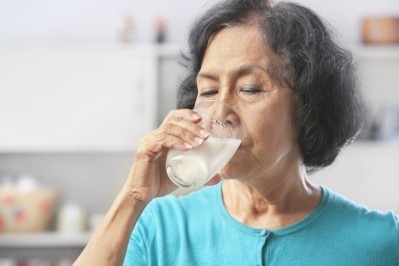ADM looks at health and wellness trends

June Lin, global vice president, marketing, health & wellness, at global ingredient company ADM said consumers are are taking more steps than ever to manage their holistic health, including physical, mental and emotional well-being.
“For example, 57% of global consumers report being concerned about their immune function since the COVID-19 pandemic began1. Shoppers are turning to nutrient-dense foods and beverages, including dairy products, that help meet health goals such as immune function support,” Lin said.
“Consumers want their foods and beverages to align with their health and wellness goals, fit into their lifestyles and taste great. In fact, 90% of global consumers are looking to functional foods and beverages to help improve their health2. On top of that, consumers are taking a long-term approach toward health and are interested in foods and beverages that can help address health issues – even if they are not suffering from them. Over half of consumers are seeking products that provide support for immune function and metabolic, digestive, joint, cognitive and skin health3.”
Lin added consumers are also concerned about weight management and metabolic health – especially during the pandemic as lack of access to health facilities, repeated quarantine measures and the winter months are restricting consumers from physical activity.
According to a recent FMCG Gurus report, in July 2020, 37% of consumers said that they have become more conscious of their weight as a result of COVID-19, compared to 21% in April 20204.
“In addition to the physical challenges with COVID-19, emotional health is being challenged more than ever as feelings of stress have understandably increased throughout the pandemic,” Lin added.
“ADM Outside Voice research finds that 35% of consumers report being concerned about mental health, and 84% see mental health as being equally important as physical well-being. Our research also shows that 49% of consumers feel every individual is unique and requires a customized approach to diet and exercise. Moreover, our research finds that 57% of consumers will exercise more in 2021. Some people are allowing themselves to indulge in comforting foods and beverages, while others are focused on exercise and enriching their diets to improve energy levels, sleep and mood.”
And how do companies find out what consumers are looking for?
Lin said, “At ADM, we believe that continual behavior and trend research is vital to understanding how to best meet consumers’ needs. We are committed to staying at the forefront of consumer research and do so through our proprietary Outside Voiceinsights platform and by working with our global network of trend spotters to discover emerging consumer trends and needs that will inform innovation opportunities. Our consumer insights and deep formulation expertise allows us to tailor our innovations to help our customers connect to people around the world and receive the benefits they want from foods and beverages.”
Communicating with consumers is also crucial. Lin said clear on-package messaging is incredibly important in educating consumers about the benefits that a product may offer.
“Shoppers who are actively seeking out health maintenance and wellness products are carefully inspecting product labels and packaging for nutrients and specific benefits. According to a Hartman Global Trends Survey, 60% of consumers say recognizable ingredients are important to their purchasing decisions. Additionally, 45% of consumers desire clarity on health benefits4. Clear communication of a product’s benefits and ingredients on packaging helps drive home the value of these offerings,” Lin said.
Fiber is number 1 ingredient
Brad Schwan, vice president, category marketing at ADM said consumers are becoming increasingly aware of the importance of gut health, especially as it relates to holistic well-being.
“Prebiotics, probiotics and postbiotics are all ingredients that can demonstrate effects on the gut microbiome, and they’re capturing consumer attention. According to a Mintel report, consumer interest in prebiotics is up by 83%, probiotics by 41% and postbiotics by 91%5,” Schwan said.
“Our research finds fiber is the number one ingredient consumers want to add to their diets. Plus, nearly 80% of consumers believe fiber is important to their diet, and more than half associate it with benefits like healthy digestion.”
Schwan said probiotics can be incorporated into foods and beverages for added convenience. Moreover, postbiotics are heat-treated versions of probiotics that now contain non-viable microorganisms. This allows them to be used in a wider array of foods and beverages, including dairy products, which are made in processing environments too harsh for most probiotics.
Plant proteins and botanicals are also trending, Schwan said.
“Our research finds that 50% of consumers are consciously eating plant proteins, with 42% identifying as flexitarians. Reasons for consuming more plant proteins vary from person to person; however, top motivators include individual health and wellness as well as concerns about sustainability. Plant proteins like soy, almond and oat are all popular protein sources in alternatives to dairy. Many people also link botanicals to a wide range of wellness benefits.”
Schwan added that many functional ingredients work well in an array of dairy application formulations.
“For instance, prebiotics, probiotics and postbiotics can be added to beverages and deliver positive consumer messaging. Plus, using these functional ingredients in plant-based alternatives to dairy products is increasing as consumers want more holistic nutrition from their plant-forward foods and beverages,” Schwan explained.
“Yogurt also presents great opportunity for product developers as this category already has a health halo around it, especially as it relates to the microbiome. Coupling microbiome-modulating ingredients with botanicals in yogurts and yogurt drinks can deliver on consumers’ desire for perceived valuable holistic benefits.
“Additionally, frozen desserts can act as both an indulgent and fiber-rich treat. By adding fiber, such as our Fibersol line of soluble dietary fiber, ice creams can maintain their signature creamy texture while also having an improved nutritional value. Fibersol can also aid in sugar reduction by helping to retain the right flavor and mouthfeel, ultimately providing indulgence with a nutritional benefit.”
ADM has a variety of functional ingredients that can easily be added to dairy products, Lin said.
Fibersol incorporates soluble fiber in various applications while building in the right texture and mouthfeel consumers expect from dairy products.
“We also have an expanding portfolio of probiotic solutions including our new HT-BPL1 postbiotic, a heat-treated version of our award-winning BPL1 probiotic. HT-BPL1 is supported by human clinical studies that have shown positive results in terms of reduced waist circumference and abdominal visceral fat. Since HT-BPL1 is tolerant to high-heat applications and other harsh processing conditions, it is much easier to add this heat-treated version into applications that are otherwise unsuitable for live organisms. For instance, we can add HT-BPL1 in dairy formulations that have harsh processing conditions, such as pasteurization or UHT treatment,” Lin said.
“Within our Decanox plant-derived antioxidant solutions, we offer an extensive range of ingredients including plant sterols, soy isoflavones, vegetable and other plant-derived oils and vitamins, functional botanical extracts and more. Our standardized and proprietary botanical extracts, including acerola and green tea, and antioxidant blends containing anthocyanins, beta-carotene, vitamins C and D and other health-supporting vitamins. Our solutions can help product developers enrich dairy products to meet consumers’ specific wellness goals.”
Schwan said ADM’s plant proteins support nutrient-dense dairy alternative and plant-forward dairy products.
“Our ancient grain ingredients and bean powders add both nutritional value and texture. Flavor and mouthfeel challenges may arise when working with plant proteins in dairy applications and it takes a holistic full-formula approach to deliver consumer delight. We leverage our complementary solutions to correct or mask off notes, and our expertise in emulsification and oils, including soybean and sunflower, ensures products deliver on a rich texture that may otherwise be lost in the absence of milkfat.
“At ADM, we have a global team of experts that work together to better innovate for a more holistic approach to formulating dairy and dairy alternative applications. We help our customers deliver products that are both delicious and functional to meet people’s high expectations of their better-for-you foods and beverages.”








